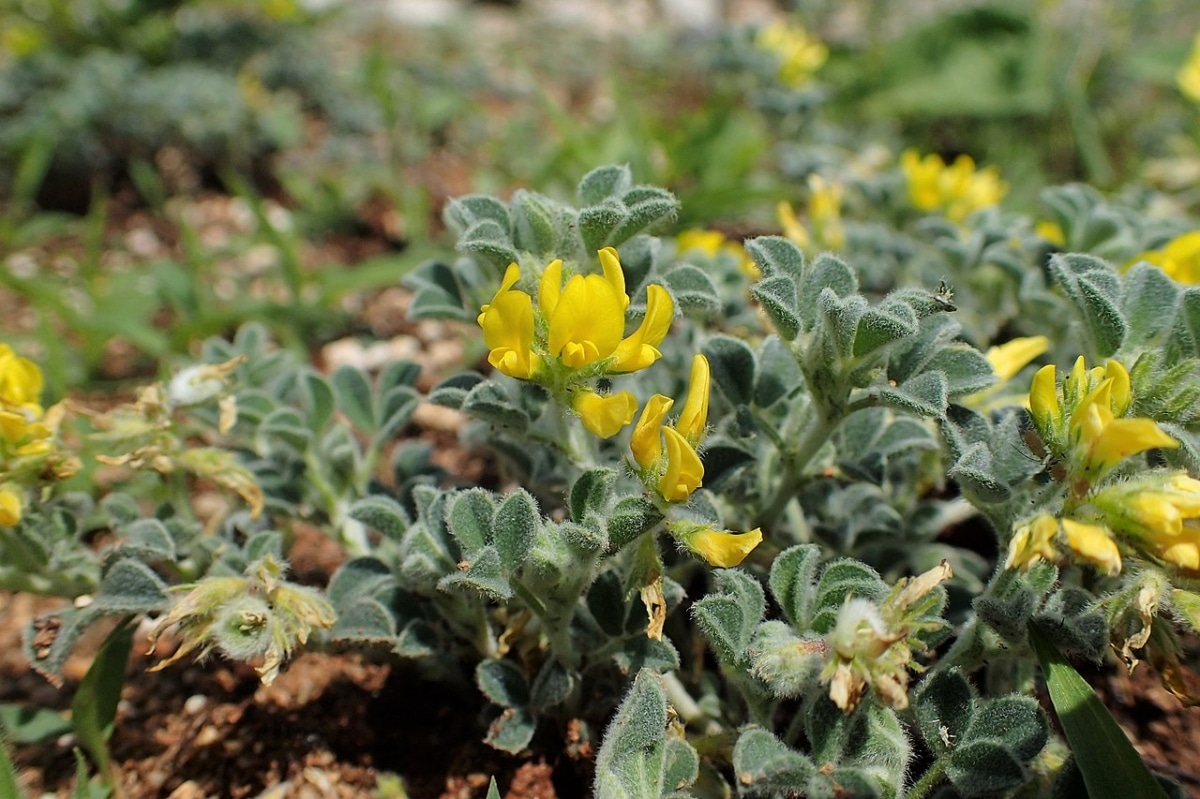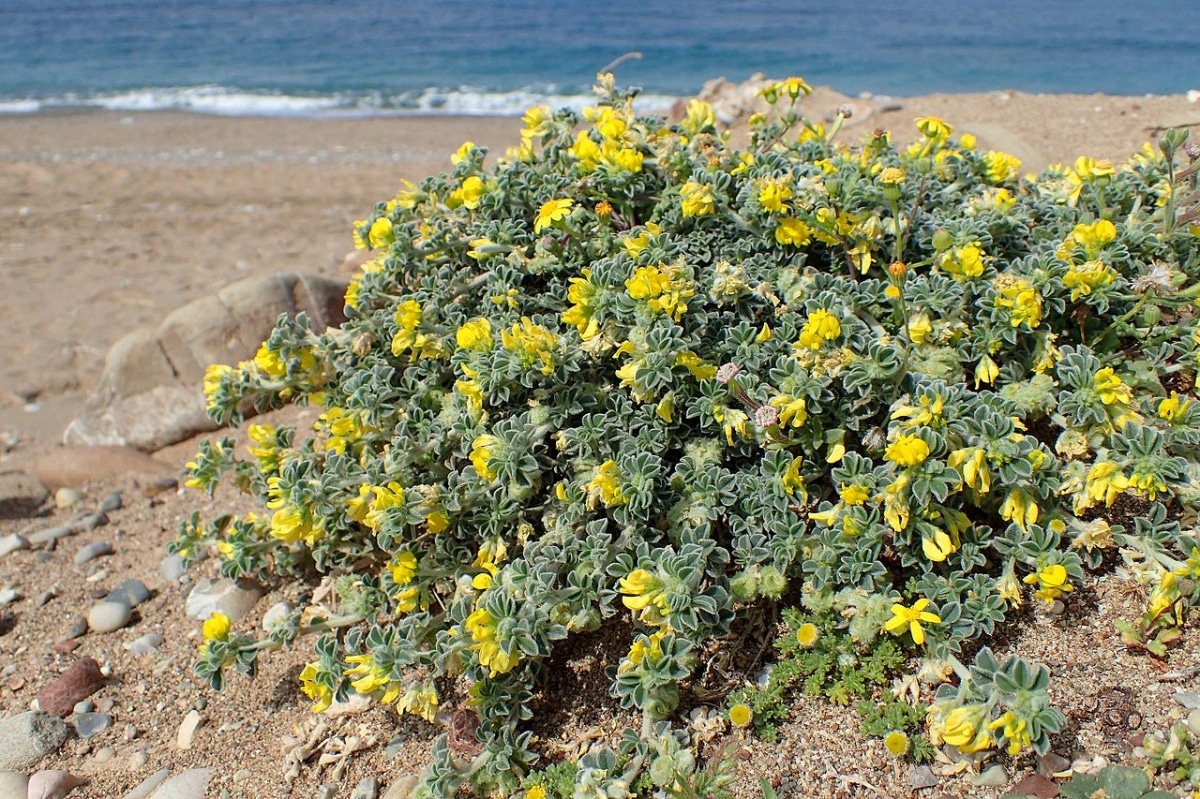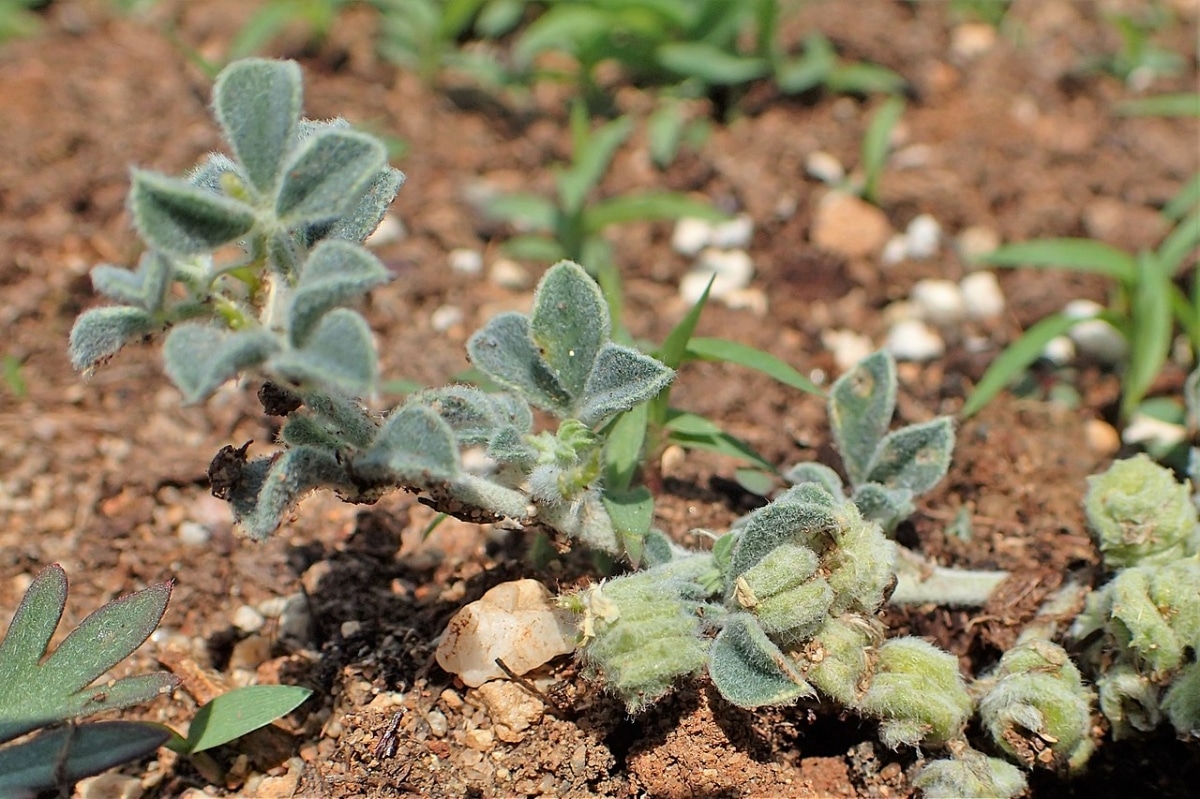
Image - Wikimedia / Krzysztof Ziarnek, Kenraiz
On the coast we find very resistant plants, which find a place to live and even flourish in this environment. If we take into account that here the wind can blow strongly, and that the air is also loaded with salt, the most common thing is to find low-rise species, such as the sea medic.
If you have been or live in the Mediterranean region, surely you have seen it at some time. A small plant, with pubescent leaves arising from stems which grow not too far above the ground.
How is the sea medic?

Image - Wikimedia / Krzysztof Ziarnek, Kenraiz
It is a perennial herb with prostrate stems which can be up to half a meter long. The leaves are trifoliate, which means that they are composed of three green to gray leaflets. Its touch is very soft, since it is covered by very, very short white hairs.
The flowers appear in spring and are yellow.. They appear almost at the end of the stems, and they also do so in groups of between 5 and 12. When they are pollinated, the fruits ripen. These are spiral-shaped legumes that measure, at most, 2 centimeters in diameter.
In popular language it is known as beach cart, beach grass, sea clover, or sea dogfish.
Where do you live?
As we mentioned at the beginning, it is a herb native to the Mediterranean. Specific, It lives on the coast, as well as in the sandbanks up to 50 meters above sea level.
It is important to say that it is included in the Red List of the Vascular Flora of Andalusia, in the Least Concern category.
Do you have any use or property?

Image - Wikimedia / Krzysztof Ziarnek, Kenraiz
La sea medicunlike her sister medicago sativa, known as alfalfa, has no use or ownership. Now, although it is true that it is not the most beautiful plant in the world, it could be very, very interesting to grow it in a garden of wild species near the sea. Its flowers, although small, have a certain ornamental value.
Therefore, if you dare to cultivate it, we recommend doing it in the following way:
- Siembra: Seeds are sown in spring. It must be done in seedling trays, putting no more than two in each hole. The substrate to be used can be universal. They bury themselves a little, and water.
- Location: It is important that you give them direct sun, since they will not be able to do well in the shade.
- Planting in the garden: you can plant them in the ground as soon as the roots come out of the holes in the seed tray. Remember that their stems can measure more or less half a meter long, so the ideal is to plant them about 55 centimeters from the others.
- Irrigation: watering will be moderate. You have to water every 2 or 3 days during the summer, and less the rest of the year.
- Subscriber: it will not be necessary, but if you want you can add a little worm humus (for sale here) or compost.
How is it different from the medicago sativa or alfalfa?

Image - Flickr / Matt Lavin // Alfalfa
The truth is that they are very different. Our protagonist is a creeping herb, with stems that are about 50 centimeters long, and which is also covered by many white hairs. Alfalfa, on the other hand, is a grass that grows erect or suberect, with an approximate height of 60 centimeters.; and although it may be pubescent, it is not as pubescent as the beach scurry.
On the other hand, we have the flowers: those of the beach runner are yellow, while those of the alfalfa they are lilac
And as for the uses, the alfalfa is used as cattle feed, but the beach corretón, as we have commented, has no use.
As you see, the sea medic It is a herb that can be very interesting.